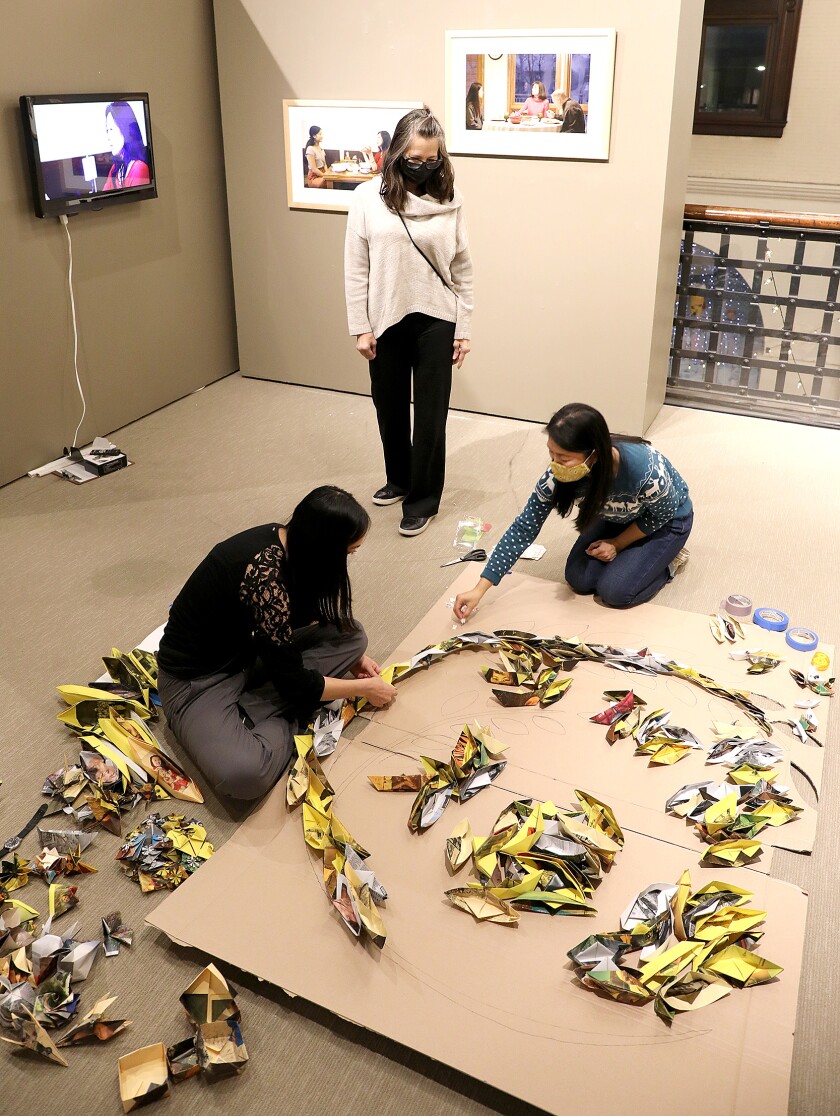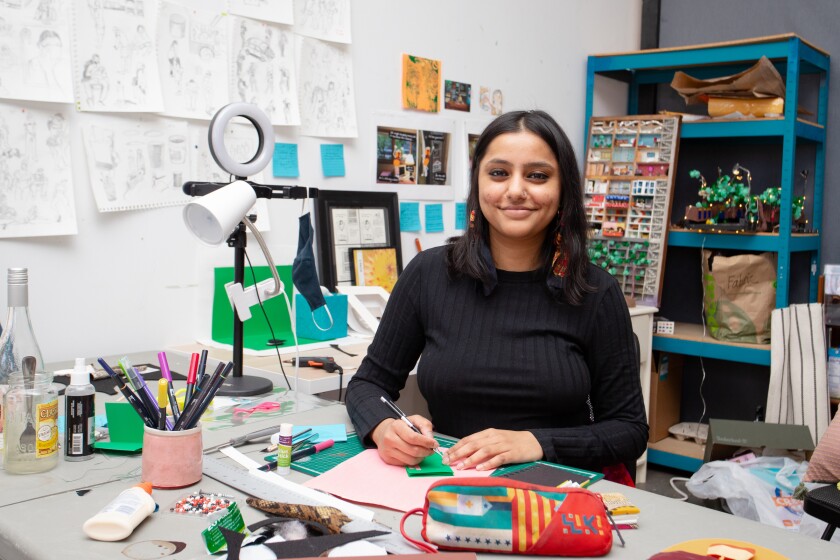DULUTH — For Christina Woods, an introduction runs deeper than a few words, so she starts with a story.
One of her names was given at birth, another arrived with her. “Anamacikwe,” or "thunderbird lady, is her sacred name, she explained to a handful of students in the Duluth Art Institute’s Lincoln Park building.
ADVERTISEMENT
“The Anishinaabe believe that before you’re born, you choose your parents. You negotiate with the Creator the life you want to live, the lessons you want to work on,” she said.
Woods then asked the girls to illustrate their names on paper for a timed exercise.
The — which engages Duluth students in free high-level visual arts workshops and leadership training — is one of Woods’ achievements since stepping in as DAI executive director.

“I’m one of a few people nationwide running a predominantly white arts organization, and I’ve shifted it to a BIPOC-led arts organization, not just because I’m there, but because of who’s on my board.
“That’s the kind of leadership and contemporary thinking that the Anishinaabe are bringing to Duluth today,” Woods said.
She has presented on this topic in webinars hosted by the , and her article discussing “the whiteness in our museums and art institutions” will be unveiled at the American Alliance of Museums in May.
“Really, what we’ve done is decolonize the organization,” she said.
ADVERTISEMENT

Woods was brought in as an interim manager in 2018 and did quite well. “We were down two people, she fixed us up,” DAI board president Robin Washington recalled, noting her focus on fundraising, grants and programming.
Regional native artists are not new to the organization, he said, referring to Frank Big Bear and Vern Northrup exhibits.
The organization was already going a more diverse route, and with the “racial reckoning” that followed George Floyd’s death, art funders included more BIPOC creators than before.
And, the DAI was ready for it. “She put us in a good position," he said.
“Rather than we changed to a focus on BIPOC or more diversity, I would say we evolved,” he added. “We’re all in this age of intersection, that’s what an art museum should do.”
The staff and board were already bringing more diversity, especially based on race, Woods said, adding: “It was an easy pivot.”
DAI leadership started shifting how educational classes are designed, as well as the exhibition selection process.
ADVERTISEMENT
They now use a panel outside of staff and board members to review all artist submissions. There’s higher percentage of BIPOC participation within this panel, and they ensure all are well-versed in the nationwide history of underrepresentation and absent ethnic and neurodivergent narratives, Woods said.

They implemented a on the DAI website.
Their board is now 60% BIPOC led.
Internally, too, there’s more equity among vacation time and flexibility to partake in celebrations outside the normative Christian culture.
“We recognized that having a floating day is really important for folks who celebrate different holidays,” Woods said, adding that now it’s not an uncomfortable request.
Woods is a strong advocate for identifying and celebrating unheard narratives, said Amy Varsek, exhibitions director and curator. The DAI galleries, classes and youth programming continue to grow in diversity and inclusivity under her leadership.
“She knows who she is and welcomes people to learn about her work and her heritage,” she said.
ADVERTISEMENT
Varsek has been with the DAI since 2015, and she said Woods honors her process and curatorial style, and she supports and empowers her voice.
Many arts spheres have been dominated by white spaces and narratives. Woods is always thinking about how the arts can add on to and initiate social justice movements, and access, said Liz Axberg, DAI community outreach coordinator and AmeriCorps VISTA.
“For every project, she asks what demographic we are serving and who we are missing. I always want to remember to take that into account, always checking my perspective,” Axberg said.

India-born multimedia artist Roshan Ganu’s “The Banyan Tree” opened in October in Duluth, and her takeaways from exhibiting at the DAI: “As a women-led organization, I want to give credit to that. I appreciated how each one had their own autonomy to make decisions,” Ganu said.
Ganu met Woods during a pre-pandemic art show in the Twin Cities. While Ganu is culturally rooted in India, her art reflects her experiences living around the world. “I often speak to a hybrid space that I inhabit as a global person.
“This is one approach I have to storytelling. Christina has her own approach with her history and her name, Anamacikwe.
Woods was born a Bois Forte tribal member, and she grew up on the Iron Range. She started her career in elementary education before adding diversity consultation and training in the Stillwater, Minnesota, school district.
ADVERTISEMENT
Since moving to Duluth in 2010, Woods worked as the executive director at the Damiano Center; a field producer for WDSE’s “Native Report”; and among other roles, she co-chaired the Duluth Human Rights Commission.
Today, she’s on the State of Minnesota Art Advisory Committee and the president of the Duluth Public Arts Commission.
While much of her professional life has been educating and enlightening folks on the “colonialistic practices embedded through generations,” she said it’s an important fit for where she’s at now.
“Our art museums play an enormous role in whose story and whose history gets told.”
The story was updated at 1:38 p.m. Jan. 20 to clarify that Christina Woods was brought in as an interim manager at the Duluth Art Institute in 2018.










